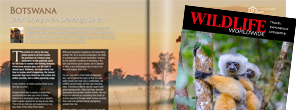Each morning we board our chartered vessel and (weather permitting) head out into the Bay of Fundy. Most trips last around three hours, although we may on occasion take a picnic lunch and remain at sea all day. Although there is no guarantee of sightings, these trips allow us to get close to whales without disturbing them.
Among the cetaceans we commonly see are harbour porpoises, minke and humpback whales and the rare North Atlantic right whale – arguably the most endangered large mammal on earth. These wonderful creatures come to feed their young in the bay, where there is also a chance of seeing huge 10-metre basking sharks. Wherever there are whales, there are generally seabirds – attracted by the same food. Flocks of great and sooty shearwaters, plus Wilson’s and Leach’s petrels can be impressive, while Arctic and pomarine skuas, great northern divers, black guillemots, puffins and razorbills are also seen.
Our guides will explain the life cycle and behaviour of the North Atlantic right whale and the other cetaceans we encounter On at least one day we will be accompanied by Canadian marine biologist Dr Moira (Moe) Brown – one of the world’s foremost experts in the North Atlantic right whale – who lives locally.
On return, there may be time to relax for a while before lunch: we can go for a walk on the estate, beachcomb and explore tidal pools, do some photography or birdwatching. After lunch, there may be time for a short siesta or a chance to read or relax before we set off on our second whale watching trip of the day.
In the late afternoon there is still plenty of time to wander the beach, watch whales from the shore, browse the library, relax, or simply enjoy the peace and quiet. There is no hectic schedule – we take things at our own pace. Each evening there will be an after-dinner illustrated talk or presentation from Mark Carwardine, Dr Moe Brown and others.


















